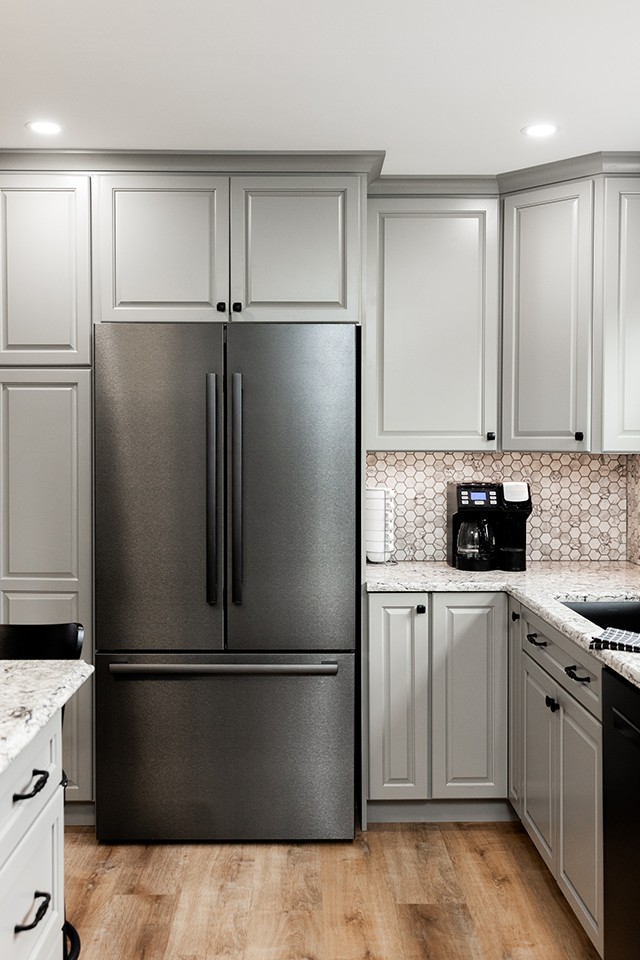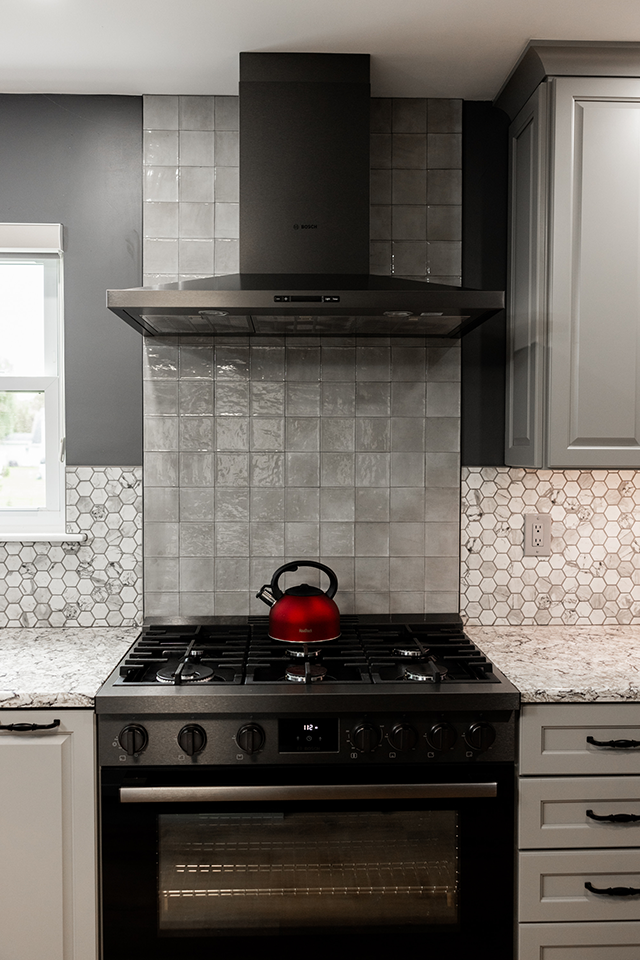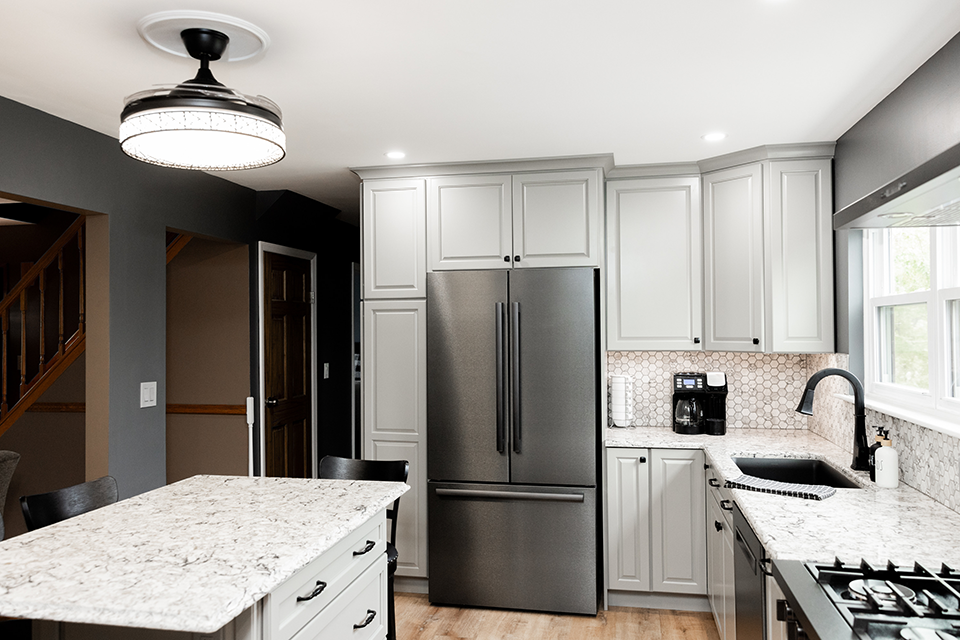
LEARN AND EXPLORE
Kitchen Functionality
The kitchen is the heart of our homes – it’s where we store, prepare, and even entertain. From doors to cabinets and worktops, each element plays a vital role in making our kitchen functional.
When planning a kitchen makeover, we often focus on how it looks, but we shouldn’t forget about how it works. While aesthetics matter, a kitchen’s efficiency is equally important. Spending hours in a visually stunning kitchen won’t be enjoyable if it’s not set up for easy meal preparation. Striking the right balance between looks and functionality ensures your kitchen is not just a pretty space but also a practical one for daily use.
LEARN AND EXPLORE
Key Elements to Designing a Functional Kitchen
1. Kitchen Layout
Your kitchen layout is like a roadmap for functionality and ease of use. Consider your cooking habits as you explore different layouts to find the one that suits your lifestyle best.
For instance, if you enjoy cooking and hosting gatherings, a large island or peninsula layout might be ideal for accommodating guests. Conversely, a smaller home might benefit from a galley kitchen, providing a closed space that helps hide any mess. The layout is a crucial factor in determining a kitchen’s functionality. Common types include one-wall kitchens, galley kitchens, L-shaped kitchens, horseshoe or U-shaped kitchens, and island kitchens. Each layout caters to different needs, so choose the one that aligns with your lifestyle for a functional and stylish
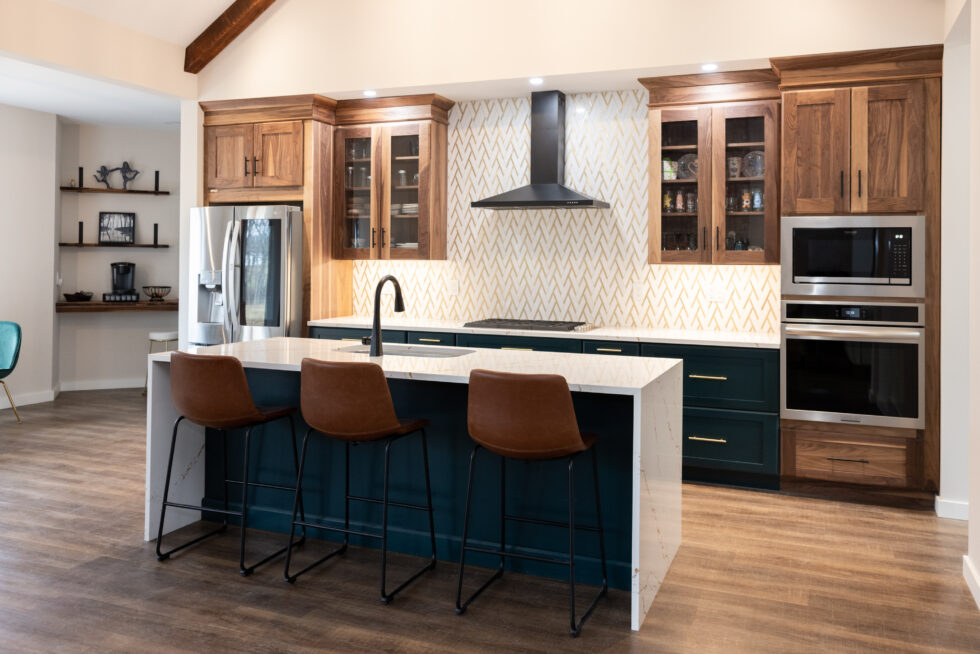
Common Types of Kitchen Layout:
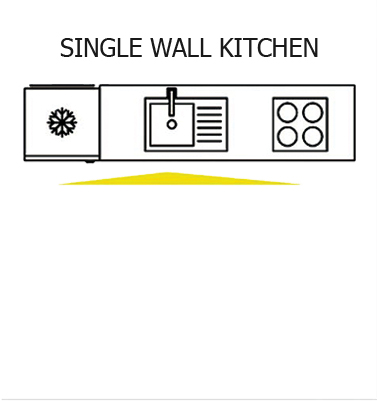
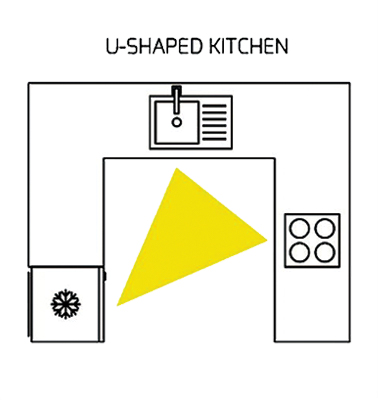
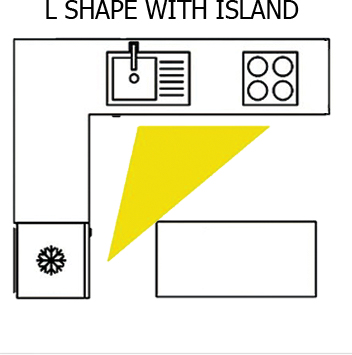
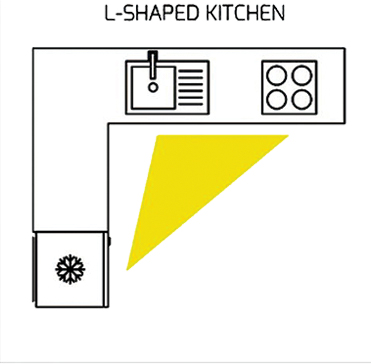
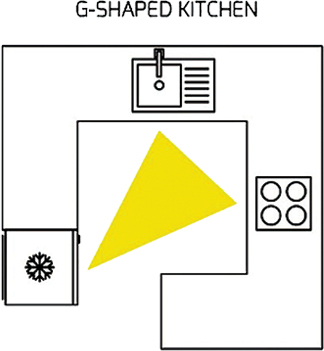
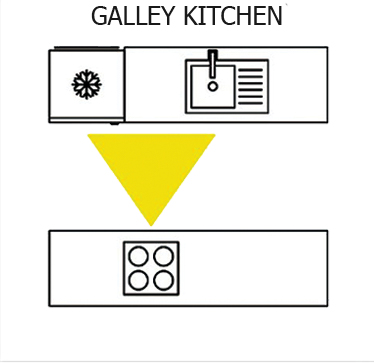
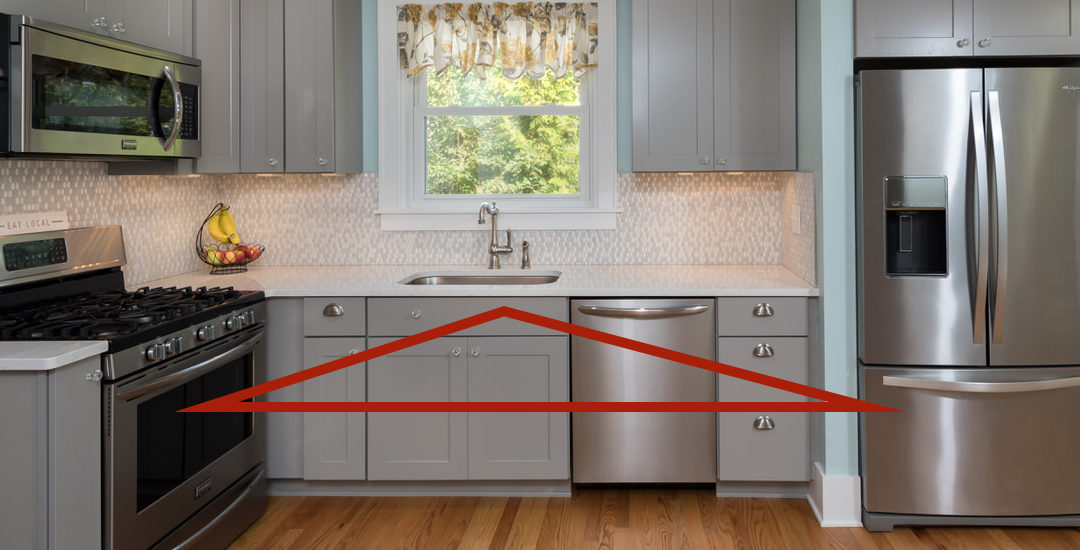
2. Kitchen Work Triangle
When designing a functional kitchen, don’t overlook the importance of the work triangle, consisting of the stove, sink, and refrigerator—the primary points of contact in the kitchen. The idea is to ensure easy access to these areas for a seamless cooking experience. Consider this triangle when planning your kitchen layout, keeping the path along it clutter-free for optimal functionality. If space allows, adding an island can enhance the efficiency of your kitchen work triangle.
The kitchen work triangle, often referred to as the ‘kitchen golden triangle,’ has been a standard in kitchen design for years. It involves arranging the sink, refrigerator, and stovetop in a triangular shape, creating clear traffic lanes for efficient workflows. This design principle aims to make your kitchen workspace practical, comfortable, and appropriately sized, optimizing your cooking, cleaning, and storage activities. Imagine a kitchen where tasks flow smoothly, reducing unnecessary steps and giving you more time for other activities.
3. Kitchen Cabinets
Choosing cabinets for your kitchen or bathroom is an exciting aspect of remodeling, but the array of options can be daunting without a basic understanding. There are three main types of cabinetry to consider: stock, semi-custom, and custom cabinets. Stock cabinets are budget-friendly but offer limited choices, while semi-custom cabinets provide more flexibility with various styles, finishes, and features. For those seeking the highest level of customization and with a more extensive budget, custom cabinets allow for a wide selection of wood types, finishes, construction options, and modifications.
When deciding on cabinets, key factors to consider include cabinet door construction, door style, and drawer style. These elements not only impact the aesthetics of your space but also contribute to the overall functionality of your cabinetry. By understanding these basics, you can confidently navigate the cabinet selection process and bring your remodeling visions to life.



SOME OF OUR SPECIALTY/ CUSTOMIZED CABINETS:
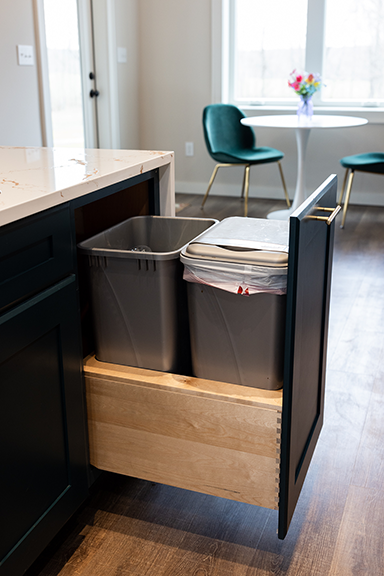
Trash Pullout Traybase
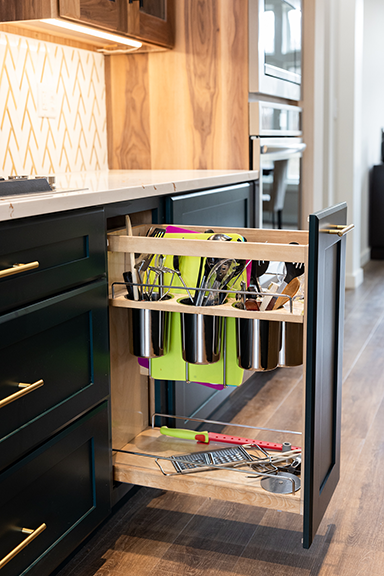
Utensil & Knife Block Pullout

Utility Cabinet with Roll Trays
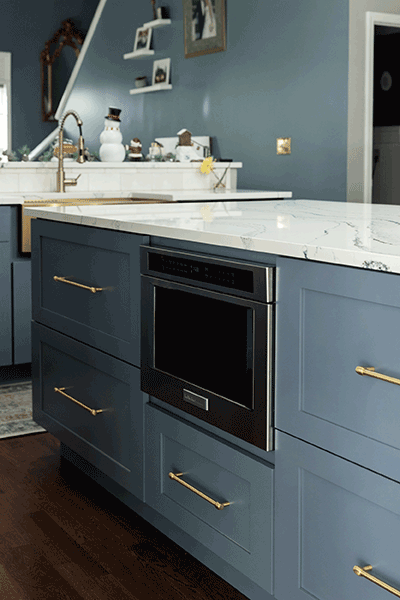
Microwave Drawer in Cabinet
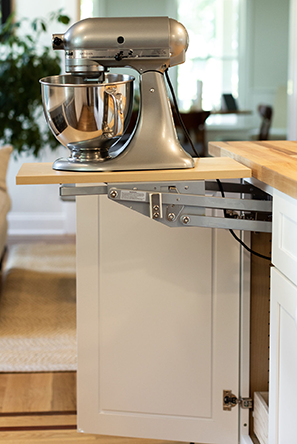
Mixer Lifter Cabinet
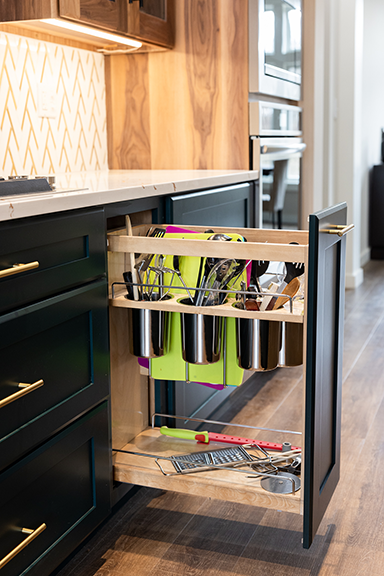
Spice Pullout
4. Kitchen Worktops
Your choice of kitchen cabinets is a major decision, but don’t overlook the impact your selected worktop can have on the overall kitchen aesthetic. As a visible horizontal plane similar to flooring, the worktop plays a crucial role in the kitchen’s look and feel, emphasizing the need to consider it early in the planning process. Given the wear and tear worktops endure, selecting the right material is vital for both durability and style.
With a variety of materials available, including laminate, granite, solid wood, marble, and composite stone, there are options for every budget and style preference. It’s essential to weigh the advantages and disadvantages of each material, considering not only their appearance but also how well they withstand the demands of daily kitchen activities. Beyond their practical function in food preparation, worktops significantly contribute to the kitchen’s overall design and ambiance, emphasizing the importance of a thoughtful and balanced decision-making process that aligns with both aesthetics and functionality.
5. Appliances
Functional appliances are essential for an efficient kitchen. Prioritize durable must-haves like a cooktop, microwave, refrigerator, dishwasher, and rangehood. Customize with additional appliances, such as freestanding ovens and wine fridges, to align with your specific needs and enhance overall functionality. This ensures your kitchen not only looks good but also meets practical requirements.



